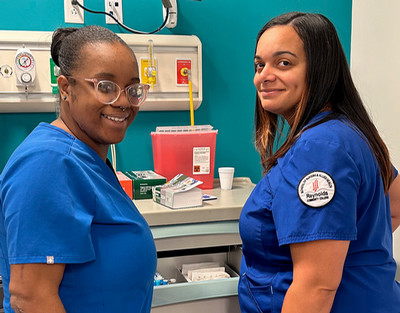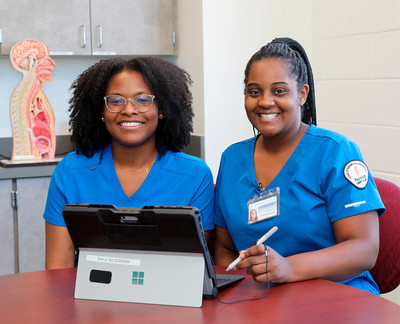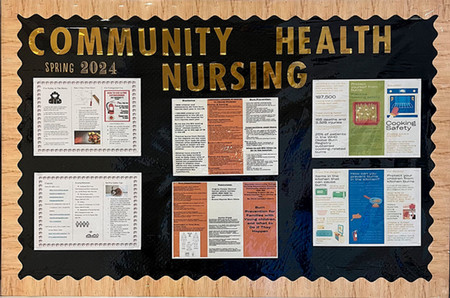Innovative Partnership Enhances Community Health Education for Nursing Students
In spring 2024, the Evans-Haynes Burn Clinic at Virginia Commonwealth University (VCU) Health Center partnered with Reynolds Community College to serve as a clinical site for its Associate Degree in Nursing (ADN) program’s community health nursing course. This groundbreaking collaboration introduced students to community health complexities and burn care nursing challenges.
Emily Gunn, Nursing Coordinator for the Reynolds ADN program, is continuously on the hunt for new clinical placements that meet the Accreditation Commission for Education in Nursing (ACEN) requirements. ACEN mandates incorporating diversity, equity, inclusion, and social determinants of health into nursing education, alongside hands-on clinical work. Gunn identified the Evan-Haynes Burn Clinic as an ideal location for students to gain real-world experience in addressing health disparities.
Gunn connected with Jodi Brown, the VCU Burn Clinic registered nurse, who agreed to serve as a preceptor, supervising the students' clinical work at the clinic.
A Comprehensive Learning Opportunity

Nursing students, Joliesha Smith and Marissa Roby.
The community health nursing course (NSG 152-Health Care Participant) provides 40 hours of clinical experience over five weeks. Under RN preceptors’ supervision, students gain exposure to burn care and community health nursing. Brown prepared a Student Orientation Packet specifically for these students, containing critical information on burn and wound care. Before their first clinical day, students toured the clinic, inpatient burn unit, and operating room (OR) to understand the complete care continuum for burn patients.
Throughout the rotation, students worked in diverse settings, including outpatient clinics, inpatient units, and the OR. This broad exposure allowed them to witness interprofessional collaboration between doctors, nurses, social workers, and therapists. By participating in grand rounds, they gained insight into discharge planning and the importance of teamwork in patient care.
Hands-On Learning: Theory to Practice
The rotation allowed students to apply theory to practice. They were actively involved in screening for PTSD, unsafe home environments, smoking, and fall risks. Additionally, they practiced wound care and dressing changes, gaining valuable hands-on experience.

Nursing students Caitlin Freeman and Deanna Anderson
A key component of the course was the development of a patient teaching project. Each student chose a topic related to the patients they encountered, such as burn prevention for families or cooking safety. These projects, presented in pamphlet form, were on public display in the clinic, contributing to patient and public education.
Positive Student Feedback and Results
All four students who participated in the rotation expressed high satisfaction with their experience. In evaluations, they praised the variety of tasks and the educational environment fostered by Brown and the clinic staff.
One student shared, “I got to perform wound care and see recurring patients throughout their healing process. The staff were welcoming and happy to let me help with wound care.”
Another student emphasized the positive learning environment: “The Evan-Haynes Burn Clinic provided a great educational experience. I was exposed to wound care and saw the OR for the first time.”
Faculty overseeing the clinical rotation noted the alignment between students' experiences and course objectives, particularly in community-based care and evidence-based practice. Students demonstrated their ability to assess diverse patient needs, create teaching plans, and apply clinical judgment in a real-world setting.
Mutual Benefits for Students and the Clinic

Student projects – PSAs on Fire safety, burn prevention, and cooking safety.
The burn clinic rotation proved mutually beneficial for both students and clinic staff. Students left with a deeper understanding of community health nursing and burn care, while staff appreciated the opportunity to mentor future nurses. Patients also benefited from the students' teaching projects, which addressed essential topics like burn prevention and safety.
Brown is currently writing an abstract to present at a National Conference on the unique nature of this site for students doing their community health rotation. No external funding was required for this partnership, but its success suggests that further research could evaluate long-term outcomes for both students and patients.
Based on the overwhelmingly positive feedback, another rotation began in October.
Expanding Clinical Opportunities
With clinical placement demand rising due to the ongoing nursing shortage, utilizing nontraditional sites like burn clinics could meet nursing education needs while providing students with rich, diverse learning experiences.
This pilot program highlights the value of expanding clinical placements into specialty areas like burn clinics, especially in community health nursing. While partnerships like this remain uncommon nationwide, the success of this initiative could inspire other nursing programs to pursue similar collaborations.
Learn more about the Reynolds Nursing AAS Program.